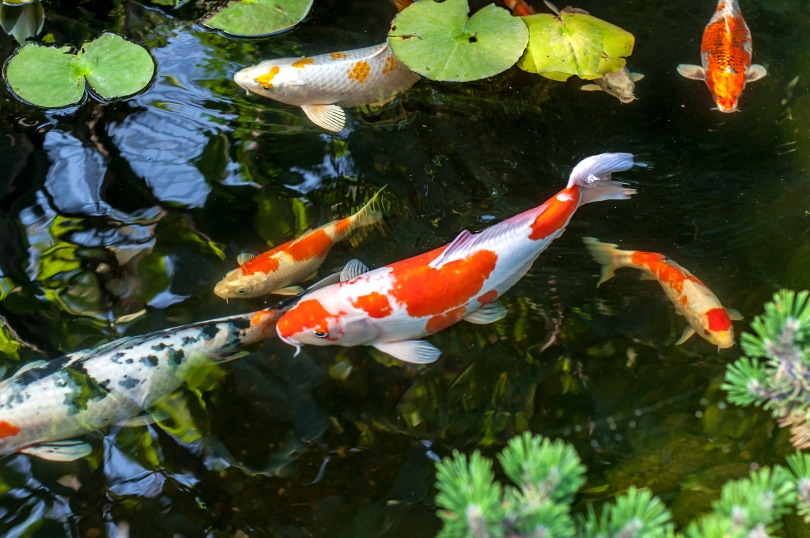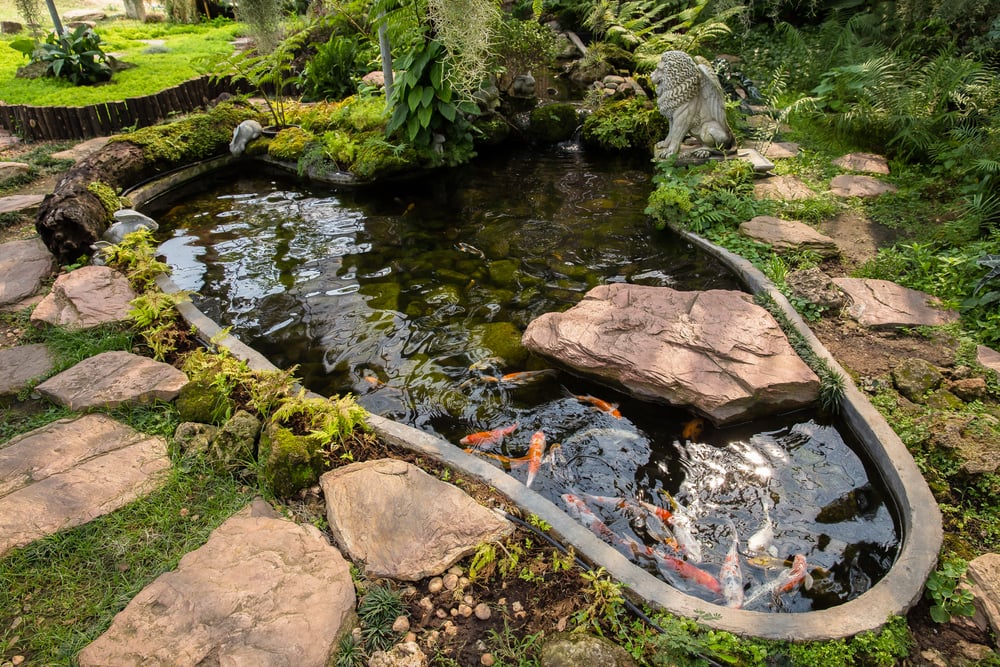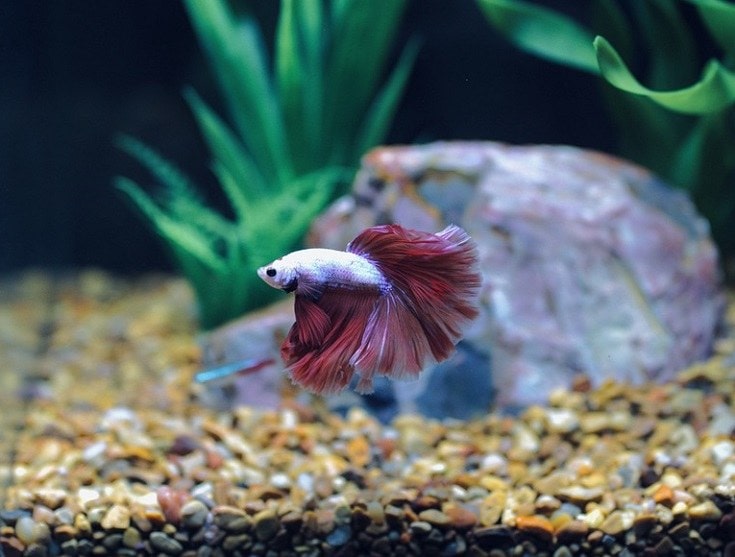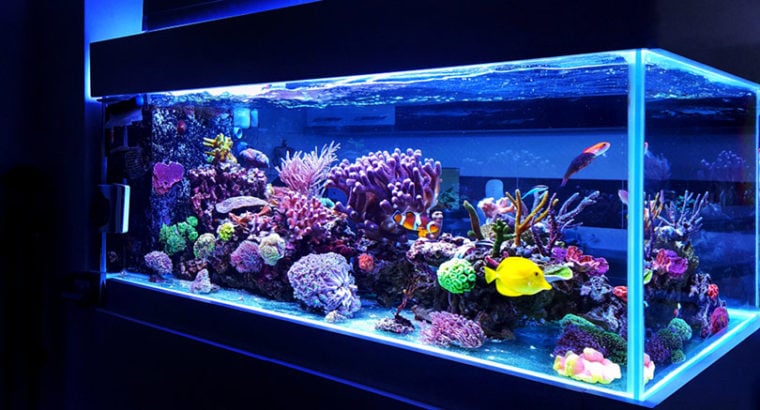
If you are unimpressed with the type of aquariums available on the market, perhaps they are too plain or do not pique your interest, then building your fish tank is the next alternative.
Aquariums come in a variety of different shapes and sizes so that they can easily fit into your environment, however, sometimes building your fish tank allows you to create this tank to your exact desired design, shape, and size.
Constructing your fish tank may cost more and require skill and patience, but in the end, when you have finished the final product and get to admire your work, all the effort might be worth it! Making your fish tank can be a fun experience, especially if you love to design and build things on your own to meet your standards.
What To Consider Before Building Your Fish Tank
Before you start working on building your fish tank, you want to consider these factors so that you can determine if this is going to be as easy as you thought.
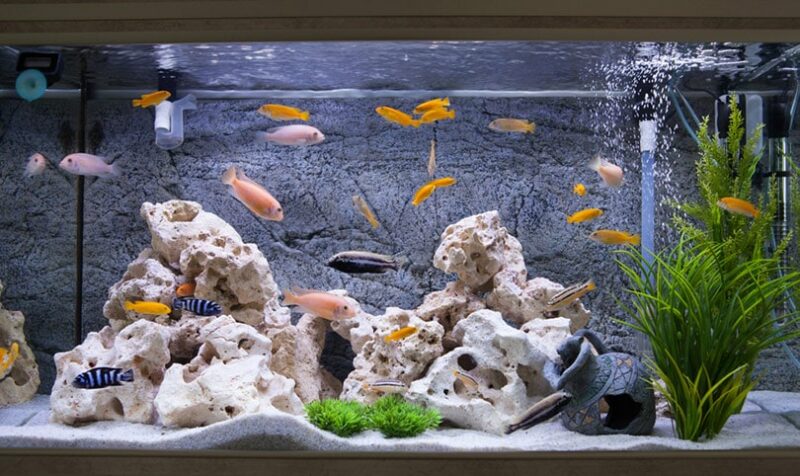
Materials
The easiest materials to construct your aquarium with will be silicone grade glue for the joints and stained or low-iron glass panes. Stained glass has a green hue and is generally the most inexpensive form of glass you can find. Whereas low iron glass or sapphire glass is much clearer but can be pricey. The glass panes which will be used to construct the tank can be cut to the desired size for the length, width, and height of the fish tank. Alternatively, you can use sheets of acrylic or plexiglass, but these are delicate materials that can scratch easily and can be more expensive.
If you plan to frame the fish tank, you do not have to be too picky on the material you decide to use, because this forms the outer shell of the aquarium and the water does not come into direct contact with it. If you plan to use cement or polyresin to form your fish tank and only have a visible panel in the front for viewing, then make sure that it is coated so it does not release any chemicals into the water over time.
Different Models
There are various models of fish tanks to get inspiration from when constructing yours. You get different shapes such as rectangular, square, or even tanks with curved edges. Each shape will give you a different viewing outcome, as narrow tanks seem to have a more magnified view whereas larger tanks provide visual depth.
Curved fish tanks provide a 360-degree view, whereas diamond fish tanks allow you to see the inside of your fish tank from all angles. If you choose to only have one visible panel in the front of the fish tank, then you will have limited viewing access to the sides and back.
The model shape of the fish tank is entirely up to you, and the look you want to achieve when constructing your aquarium. You can even look at some websites for fish tank design inspiration.
Dimensions
Getting the dimensions right is important, not only when you are joining the glass panels or building the frame that will fit around the fish tank, but also when you are calculating the total volume of water the tank will hold so that you can find the right environment to place it on.
You want to ensure that each panel is the same in terms of the length, height, and width so that you do not have any panels that stick out oddly which can make a fish tank look less visually appealing due to any overlapping panels.

Tools and Skills
If you want to build your fish tank, then you will need to first ensure that you have the right tools to build it. A silicone glue gun dispenser will be necessary so that you can glue the tank’s panels together from the inside once each panel is in line with the other. When it comes to purchasing glass or plastic panels, most hardware stores will pre-cut them according to the dimensions you provide them with.
Building a basic fish tank (gluing the glass or plastic panels together) does not require much skill but having knowledge on how to align the glass and glue properly and uniformly them together properly will come in handy. In some cases, you might want another person to help you build the tank.
Placement
Once you have figured out the dimensions and materials you will use to construct your fish tank, you will then have to consider where you are going to place the tank. The tank will need to be on a sturdy surface that can support the entire length of the aquarium. Placement is important because once it is filled with water, it becomes heavy and will not be able to be moved around.
How To Build a Fish Tank (Step-By-Step)
1. Planning the design
The first step to successfully building your fish tank will be to draw out and design a thorough plan on what you want the fish tank to look like. You will need to choose the size and volume of the aquarium and what type of shape you want the fish tank to have. You should consider the glass thickness and type because the glass needs to be strong enough to withstand the added water pressure. If you choose a larger aquarium (above 50 gallons), then you will need to ensure that the glass and silicone joints are thick enough. If you choose glass that is too thin (even if you layer the joints with layers of silicone) then a large aquarium is at risk of bursting from the water pressure.
This is also when you should begin designing the frame and choosing the right supporting cabinet or stand that your fish tank will be placed on.
2. Choose your panels
You have plenty of options to choose from when it comes to the material the panels will be made from. You can choose between standard glass, low iron glass, or even plexiglass and acrylic. You can have the panels pre-cut or cut them yourself if you have the right tools at home. Make sure that the dimensions (length × width × height) are the same so that each panel is in line with each other and does not overlap.

3. Align the panels
Start to align the panels with each other to make sure they fit uniformly. The base of the tank should be placed in the center with the other panels along the sides. Use sandpaper to smoothen any rough edges of the glass to ensure that there are no irregularities. The glass does not have to be perfect, but it is easier to balance the panels together if everything fits properly. You might need an extra pair of hands to hold the panels while you are doing this step so that a panel does not accidentally fall.
4. Apply the silicone
Now it is time to start putting the aquarium together! Avoid placing the silicone on each side at the same time, rather focus on one side at a time so that you can ensure there are no irregularities. You will need a silicone gun dispenser to line the inside of the tank where the panels connect, starting from the base and then the other four corners.
Use a blade to scrape off any excess silicone that leaks onto the actual panels. Make sure you run the silicone in a straight thick line so that there are no air bubbles or irregularities that will cause leakage problems for the fish tank.
The silicone should be applied all along the base and up to the corners of the aquarium.
5. Push the glass
Once you have secured the silicone inside of the fish tank, press all the panels together so that it fits securely. The tank might be a bit unstable because the silicone is still wet, so you will need to let it dry overnight. Make sure that the silicone is even, so that there are no spots where the silicone is too thin and weak to support the tank once the water has been added. You can also tape the sections together until the silicone is fully dry.
Make sure that each panel is perfectly in line with each other so that there are no gaps. Once the silicone has dried, you will not be able to realign the panels, so this step is important.

6. Fix any mistakes
Even if you have aligned the panels properly and secured the joints with silicone, there may still be noticeable mistakes after it has dried—which is normal! You can reapply the silicone to any areas that look weak. You can check for this issue by filling the aquarium with water and then seeing if there are any leaks. If you notice any bubbles in the silicone placement, it is usually not a concern unless there are holes where there is a weak spot in the silicone connecting the panels and base.
Final Thoughts
After following these steps, you will have successfully constructed a standard glass aquarium! Adding a frame or lid is up to you, but you can construct one yourself by making the lid and frame a few inches larger than the actual aquarium itself so that it fits over the fish tank properly.
Once the silicone has fully dried and past the leak test, then you are ready to set up your custom-made fish tank. Always ensure that you empty the water from the leak test first before you move the aquarium to the placement area as once the aquarium is filled with water, it should not be moved to prevent putting any excess pressure on the fish tank.
See also
- 15 Adorable Short-Legged Dog Breeds (with Pictures)
- How to Calculate Aquarium Volume: 5 Vet-Reviewed Measurement Tips
Featured Image Credit: Vojce, Shutterstock



